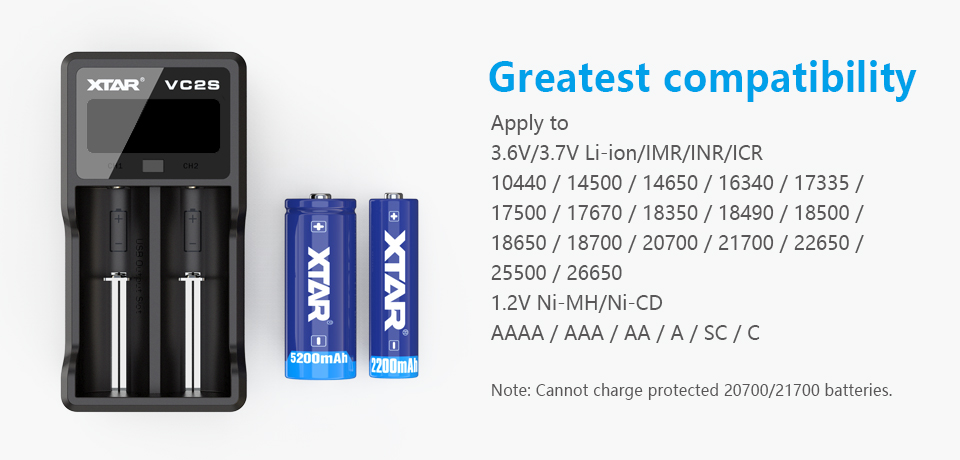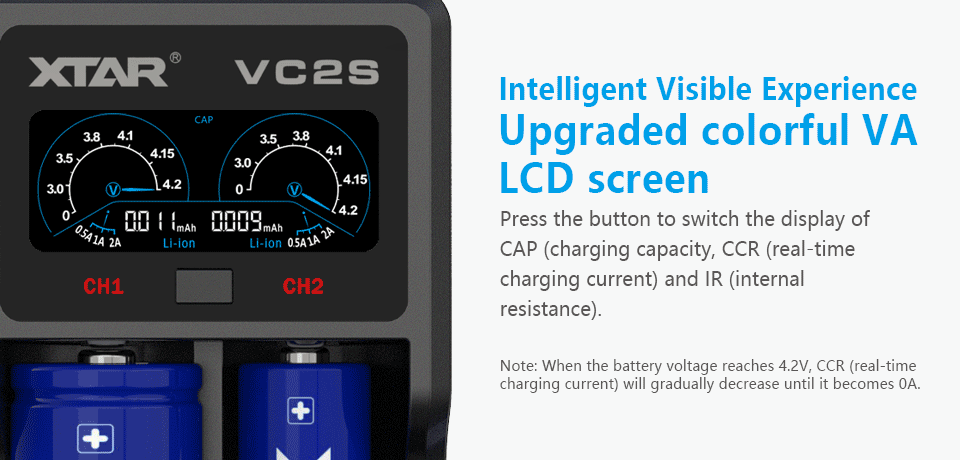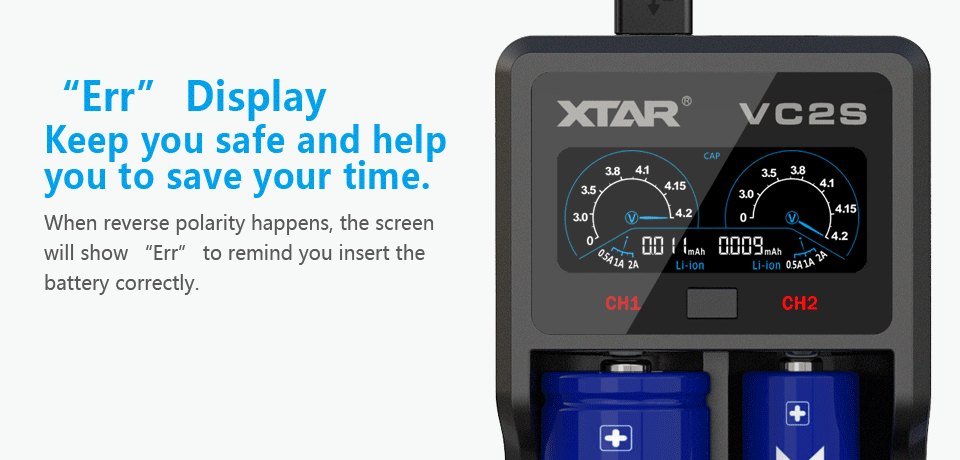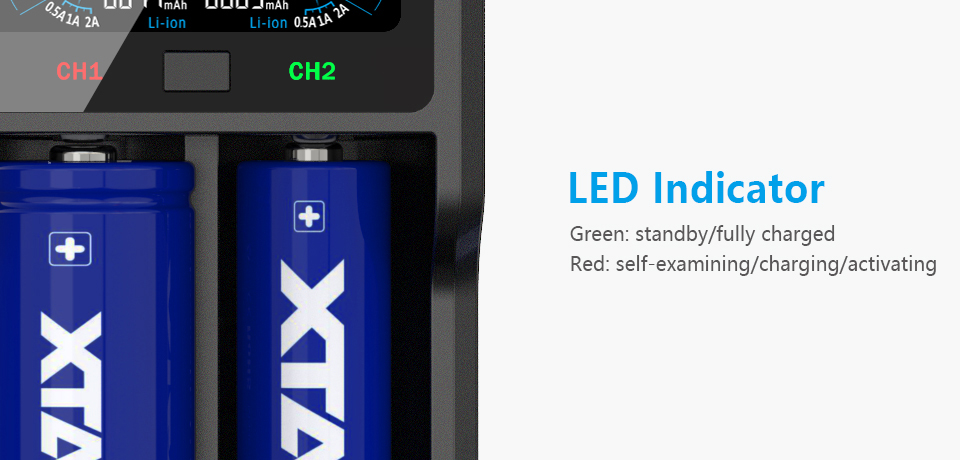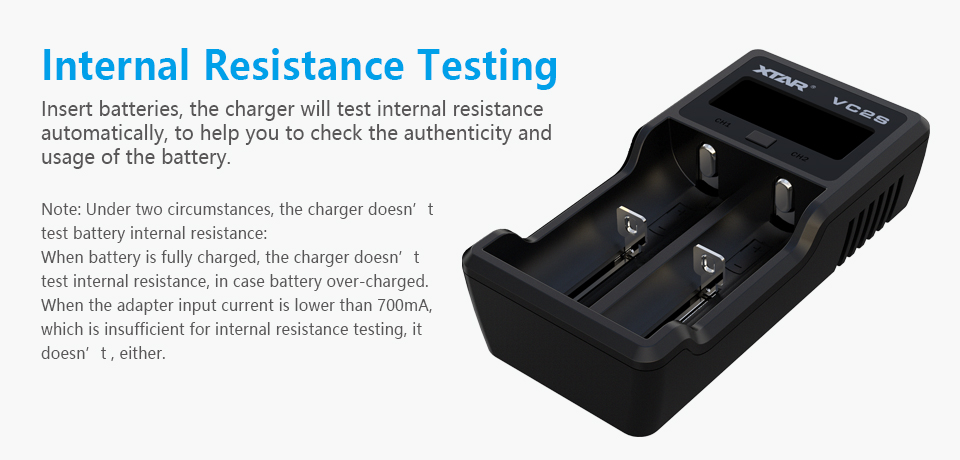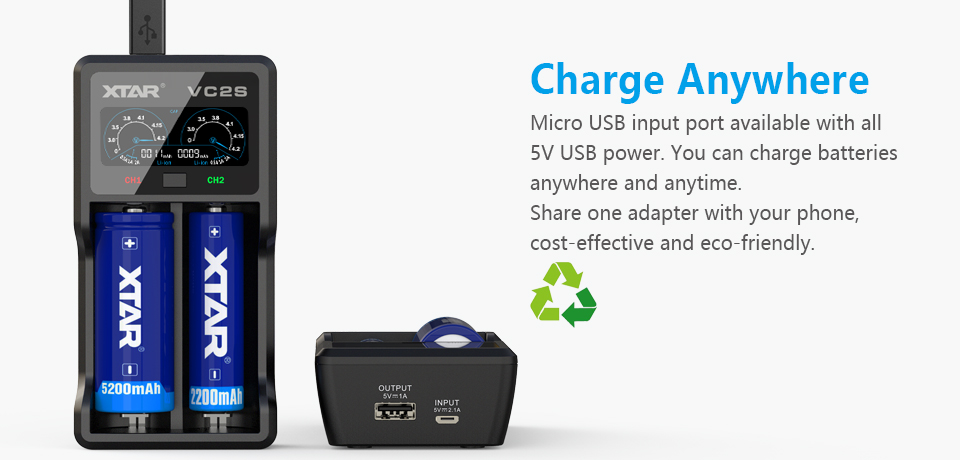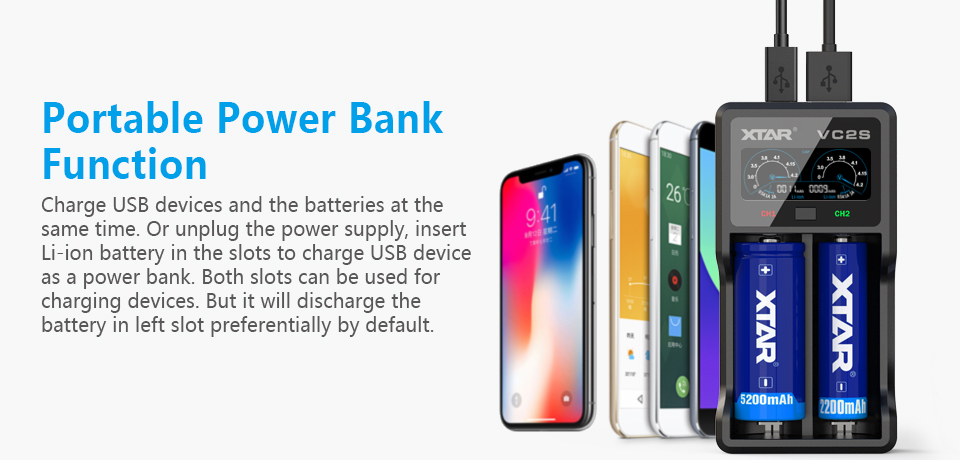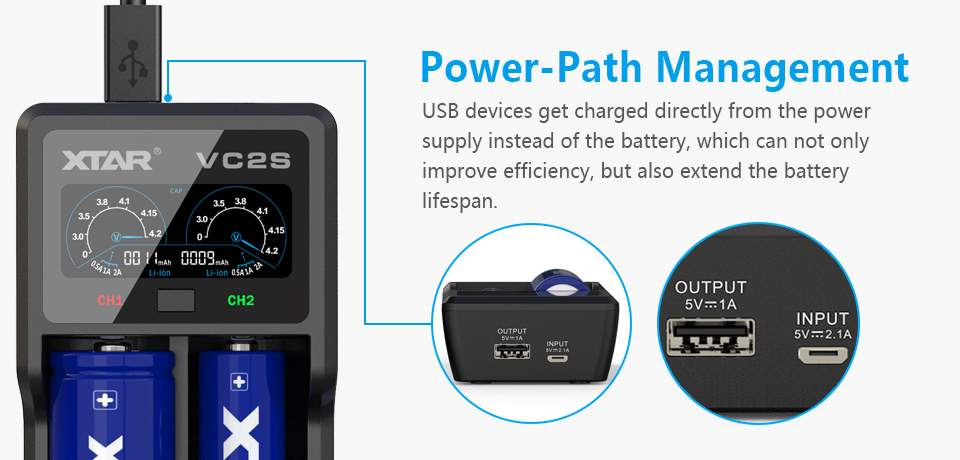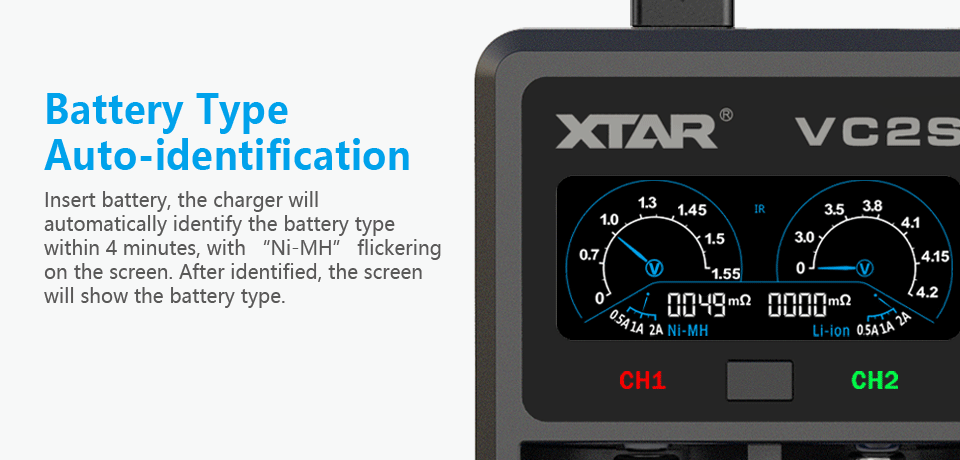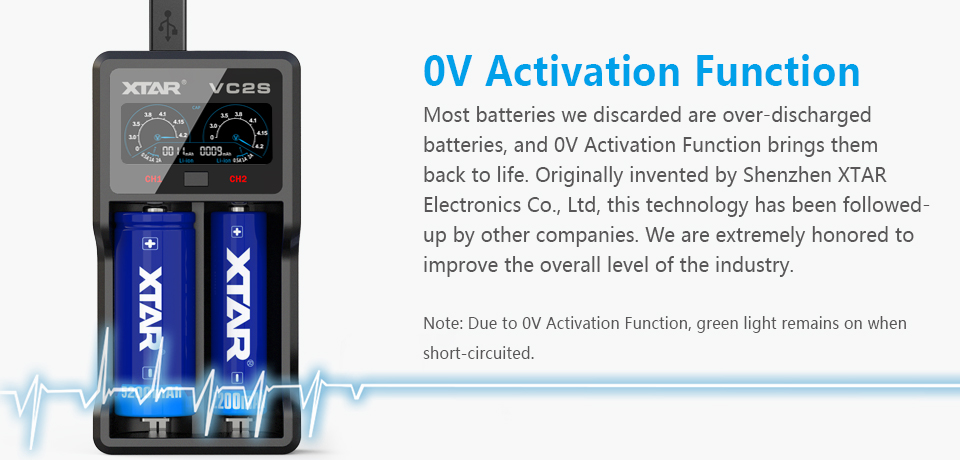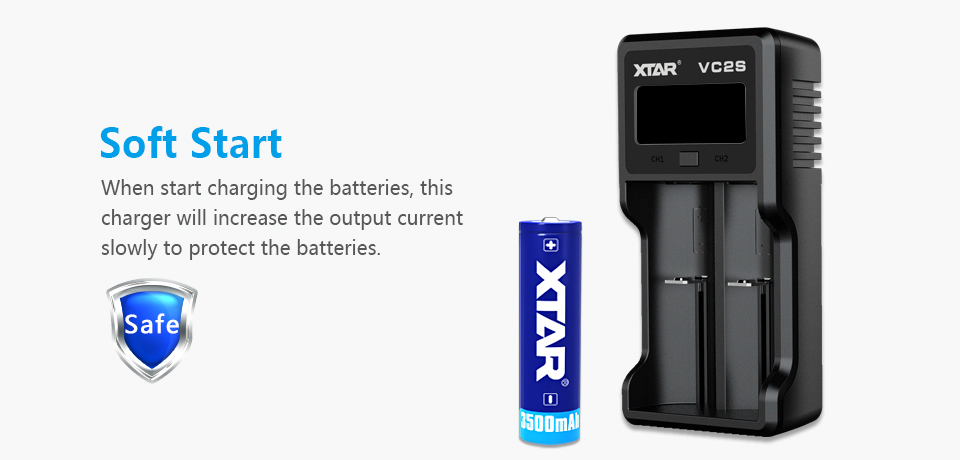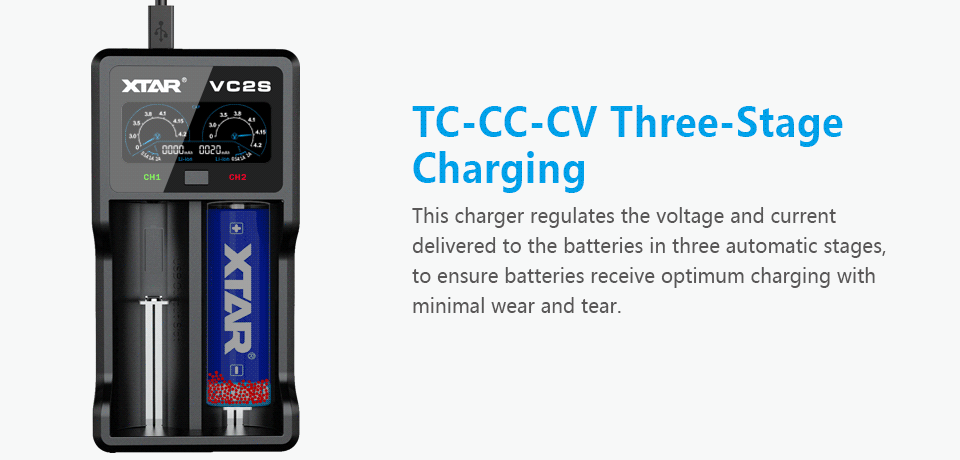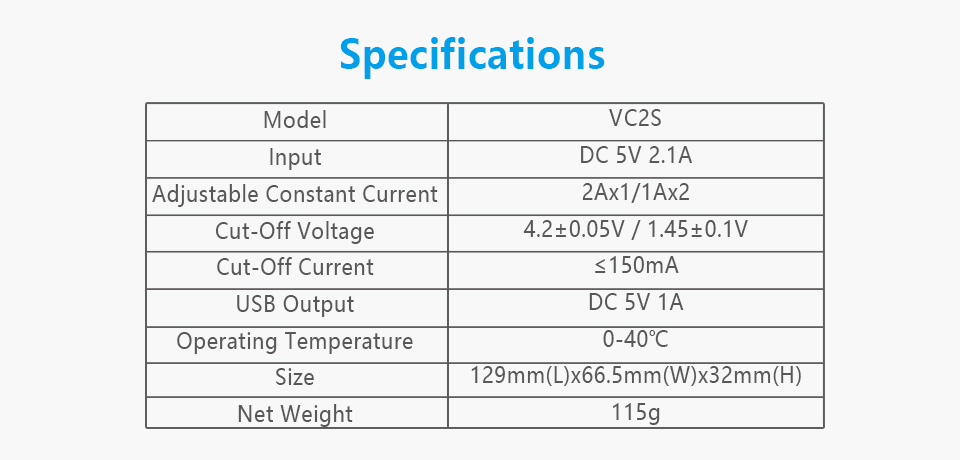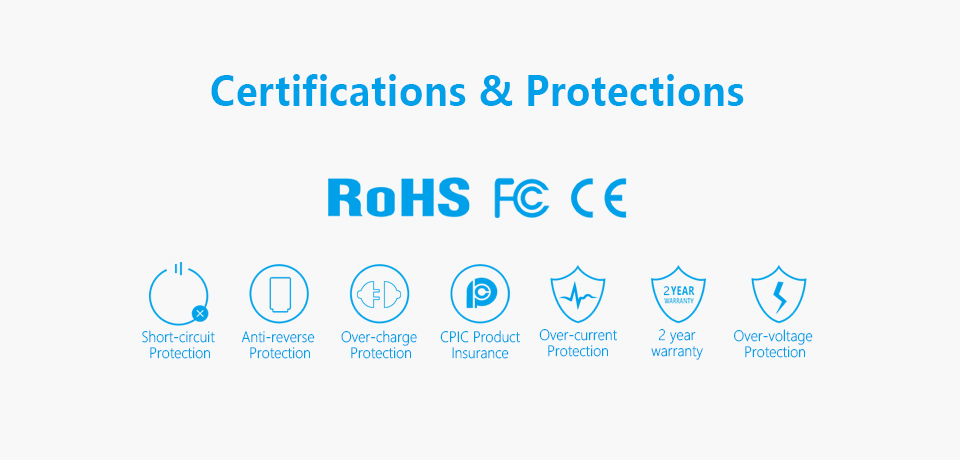Charger for cylindrical batteries Li-ion/Ni-MH/Ni-CD 18650 Xtar VC2S
Three-stage charging method: TC/CC/CV
Two independent charging channels
VA LCD Colour display
Reactivation of deeply discharged cells and 0V cells
Measurement of capacitance and resistance of cells
Charging Current: 2x 1A/1x 2A | Charging voltage: 4, 2V
Powered by Micro USB-no power supply included
Protection: Thermal, short-circuit, before the reverse insertion of the battery
|
|
Professional dual-Channel compact processor charger VC2S is a professional processor loader with three-stage charging process TC/CC/CV and LCD display. It charges 1-2 Li-ion 3.6/3, 7V and Ni-MH cells with any capacity in the sizes AAA/R03, AA/R6, R14/C, 10440, 14500, 14650, 16340, 17500, 17670, 18350, 18500, 18650, 18700, 20700, 21700, 22650, 25500, 26650.
Xtar VC2S
Li-Ion and Ni-MH batteries in 18650, AA, AAA and other sizes
• Charging of Ni-MH rechargeable batteries by CC method
• Two independent charging channels
• Two charging currents-2x 1A and 1x 2A
• VA LCD display for charging capacity, cell voltage, charging current and internal link resistance
• Powered by any charger with a 2A USB socket
• Compact size-Easy to carry
• Reactivation function of deeply discharged cells
• Protection: Short-circuit, thermal, reverse polarity
Illuminated VA LCD Charger display Xtar VC2S shows up to date information on the operating status of the charger: rechargeable batteries Expressed in mAh, battery voltage, charging current and internal resistance of the cell.
What Is THE TC/CC/CV charging method? It is a three-step process of loading Li-ion cells to keep the cell in good condition by charging the right current at each stage and completing the charging process at the right moment.
The various stages of the TC/CC/CV process are:
• TC phase: Cells discharged below 2, 9V are ' awake ' to lower currents.
• CC phase: When 2, 9V is reached, the cell is loaded with a constant current of 0, 05A to 0, 5A (depending on the power source being used).
• CV phase: When the cell is already nearly charged, the charger switches to a decreasing current charge until it reaches a voltage of 4, 2V on the cell. After reaching 4, 2V the charging process is complete-the battery is fully charged.
When left in the charger, the charged batteries will be subjected to a natural self-discharge process. Charging will resume when the battery voltage drops below 3.9 v.
The Xtar VC2S Charger has a function of reactivating deeply discharged cells and cells with a Voltage Of 0v. Many chargers on the market are not able to charge such batteries. Here with the help comes the charger Xtar VC2S, which in many cases allows you to ' resave ' such cells. Just insert a deeply discharged battery into the VC2S charger, as with normal charging, the charger detects the unloaded link and attempts to reactivate it. Attention! Cells unloaded below a certain level are irreversible and reactivated may not be possible. Avoid too deep discharge of Li-ion batteries-this can lead to a significant reduction in their durability and capacity or to their total malfunction.
The Xtar VC2S has an additional power bank function with 5V USB output with a maximum power of 1A. Any Li-ion battery with a minimum capacity of 2200mAh can be used as a power source. To use the Power Bank function, disconnect the charger from the power supply and place the batteries in it. When you connect the device to the USB output, the charger will automatically show
Supplied with the Xtar VC2S Charger, we receive a micro USB cable. The power supply is not Included In the set. Any charger with a USB socket, for example, is enough to power the charger. Phone, or USB port or a computer with a free USB socket. Recommended charger Power is 2, 1A (2100mA).
| Product data | |
| Manufacturer | Xtar |
| Charger Model | VC2S |
| Supported Battery types | 1-2 Rechargeable Li-Ion 3.6 batteries-3, 7V, secured and unprotected 1-2 Rechargeable Ni-MH 1.2 v Batteries |
| Supported Battery Sizes | 10440, 14500, 14650, 16340, 17500.17670, 18350, 18500, 18650, 18700, 20700, 21700, 22650, 25500, 26650, AA/R6, AAA/R03, R14/C |
| Maximum battery length | 71mm |
| Charging method | Li-ion-processor-controlled TC/CC/CV NiMH-controlled processor CC |
| Charging Currents | 2x1A, 1x2A |
| End Voltage Loading | 4, 2V ± 0, 05V |
| Current of terminations | < 150mA |
| LCD Display functions | Current indications: Charging capacity, cell voltage, charging current and internal resistance of the cell |
| Additional functions | Reactivation of deeply discharged cells and cells 0V |
| Security | Thermal Short Circuit Before the battery is reversed |
| Input voltage and Input current | 5V 2100mA |
| Power connector | Micro USB |
| Power supply included | Not |
| Recommended power supply | 5V 2A |
| Power Bank function | Yes, 5V Max 1A Electronically protected output from overload (Exit off) |
| Dimensions | 129 x 66 x 32mm |
| Weight | 115g |
| Kit contents | Charger Micro USB Cable, |
| Warranty | 24 months old |

 Polish version
Polish version


